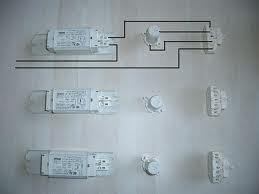i got my stuffs in today 
10 ballasts and lights and all misc stuff to wire it all
5 x 2700 and 5 x 6000 36 watts.
i will be mounting those into my pc, and hoping to fit 3-5 of them in there.
tho i will have to keep an eye on the temps as im sure these will generate some heat inside such a small space
The ballasts ill be mounted to the metal of the case and the lamps below that .
But i figured i need some form of divider to split up the space with the ballasts to
make the temperatures easier to manage if i end up fitting 5 instead of 3.
i was thinking of using wood as a divider, and mount the 2G11's on there.
tho I'm not sure if the heat produced by the light, especially near the base of the light
is going to be a problem for a wooden plate.
Ill be using this to guide me through the wiring:

These happen to be similar to the parts i ordered so i don't expect any problems there
Yay... Soon ill be ready for the 1st test grow
10 ballasts and lights and all misc stuff to wire it all
5 x 2700 and 5 x 6000 36 watts.
i will be mounting those into my pc, and hoping to fit 3-5 of them in there.
tho i will have to keep an eye on the temps as im sure these will generate some heat inside such a small space
The ballasts ill be mounted to the metal of the case and the lamps below that .
But i figured i need some form of divider to split up the space with the ballasts to
make the temperatures easier to manage if i end up fitting 5 instead of 3.
i was thinking of using wood as a divider, and mount the 2G11's on there.
tho I'm not sure if the heat produced by the light, especially near the base of the light
is going to be a problem for a wooden plate.
Ill be using this to guide me through the wiring:
These happen to be similar to the parts i ordered so i don't expect any problems there
Yay... Soon ill be ready for the 1st test grow




 .
.
